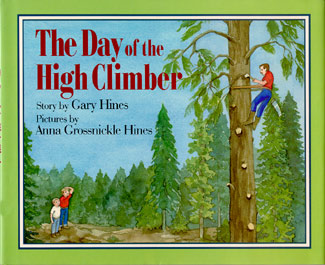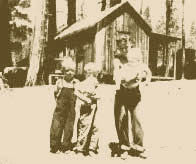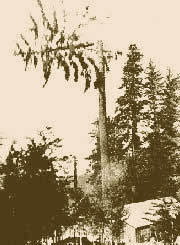
 About the story...
About the story...
The story is but a spoonful of delightful tales and experiences told to me by those who lived in logging camps between the 1920's and late 1950's.
Some were adults then, some children. Without exception, all looked back on those days as meaningful and enriching. Their eyes often welled with tears as they reflected on earlier times.
Once an old locomotive engineer, a widower, asked if I might take him out to a now vanished logging camp so he could tell me about it. When we arrived, he had lots of interesting stories. He even stood on the spot where he'd first met his wife. That, of course, was his main reason for going there.
Writing, for all its capabilities, can't recreate history. It can only fictionalize it. These people saw themselves on an adventure, a dance of survival in partnership with their families. Most were young. Life was hard, but it was romantic, something incomprehensible, really, unless you've lived it.
About the illustrations...
The illustrations were done by my wife, Anna Grossnickle Hines, who describes the process in her own words...
"They were a real challenge. I usually draw everyday things, things I have all around me. This story takes place in a logging camp in the nineteen-thirties. Some of their everyday things would have looked quite different from ours. The cabins they moved from camp to camp on the trains are nothing more than  falling down shacks now, so I couldn't go inside one and see what it looked like. How did a family of four fit everything they needed inside two nine foot square rooms? What kind of stove did they have? What kind of linoleum pattern would have been in style then? The story also talks about steam donkeys. I'm not fond of drawing mechanical things to begin with, and I'd never seen a steam donkey working. How was I supposed to draw it? But I did like the people in the story and the way they spent their summers in the logging camps.
falling down shacks now, so I couldn't go inside one and see what it looked like. How did a family of four fit everything they needed inside two nine foot square rooms? What kind of stove did they have? What kind of linoleum pattern would have been in style then? The story also talks about steam donkeys. I'm not fond of drawing mechanical things to begin with, and I'd never seen a steam donkey working. How was I supposed to draw it? But I did like the people in the story and the way they spent their summers in the logging camps.
"From the pictures Gary had taken of the photographs in the family albums of some of the people to whom he'd talked, I could see how they dressed, what their cabins looked like from the outside, and something of their camp surroundings. Gary also helped me do research at the library and in some of his books to find photos of steam donkeys at work, high climbers topping trees, old stoves, and linoleum patterns from the 1930's. It turned out to be kind of fun.
 "The little strip pictures at the top of the text pages gave me an opportunity to show a little bit more about what the camps looked like, and how the machinery worked than I could put into the story illustrations. That worked out well, because I wanted to put a decorative strip at the top of those pages as I had done when illustrating A Ride in the Crummy, Gary's first book about railroad logging.
"The little strip pictures at the top of the text pages gave me an opportunity to show a little bit more about what the camps looked like, and how the machinery worked than I could put into the story illustrations. That worked out well, because I wanted to put a decorative strip at the top of those pages as I had done when illustrating A Ride in the Crummy, Gary's first book about railroad logging.
"The other big challenge in this book was to get the scale and perspective correct inside the cabin. Since I couldn't go inside one and see how it looked in those tiny little rooms I had to make it up. I reviewed what I'd learned about vanishing points, covered my drawing table with big sheets of paper and constructed the cabin and furnishings with rulers and straight edges. I wouldn't want to draw that way all the time...but it certainly helped in this case."
This book is now only available at your local library, or you can order a copy from me.
Published by Greenwillow Books, 1994
ISBN 0-688-11494-6 Lib ed 0-688-11495-4
Return to Books